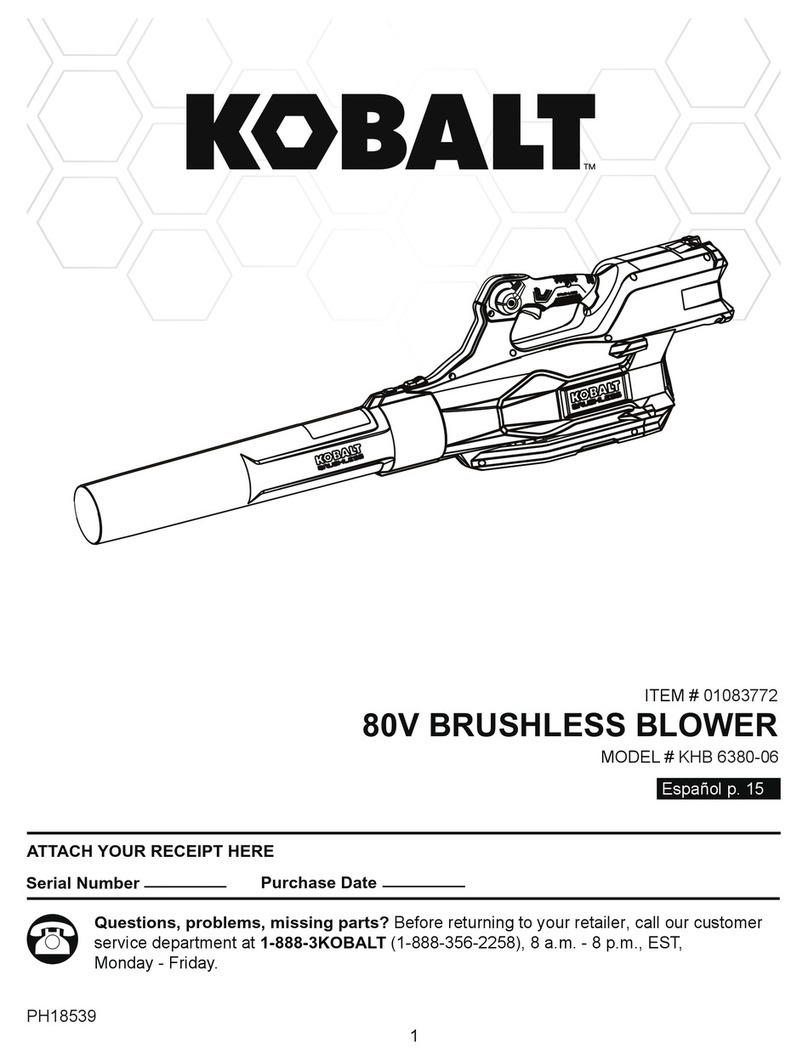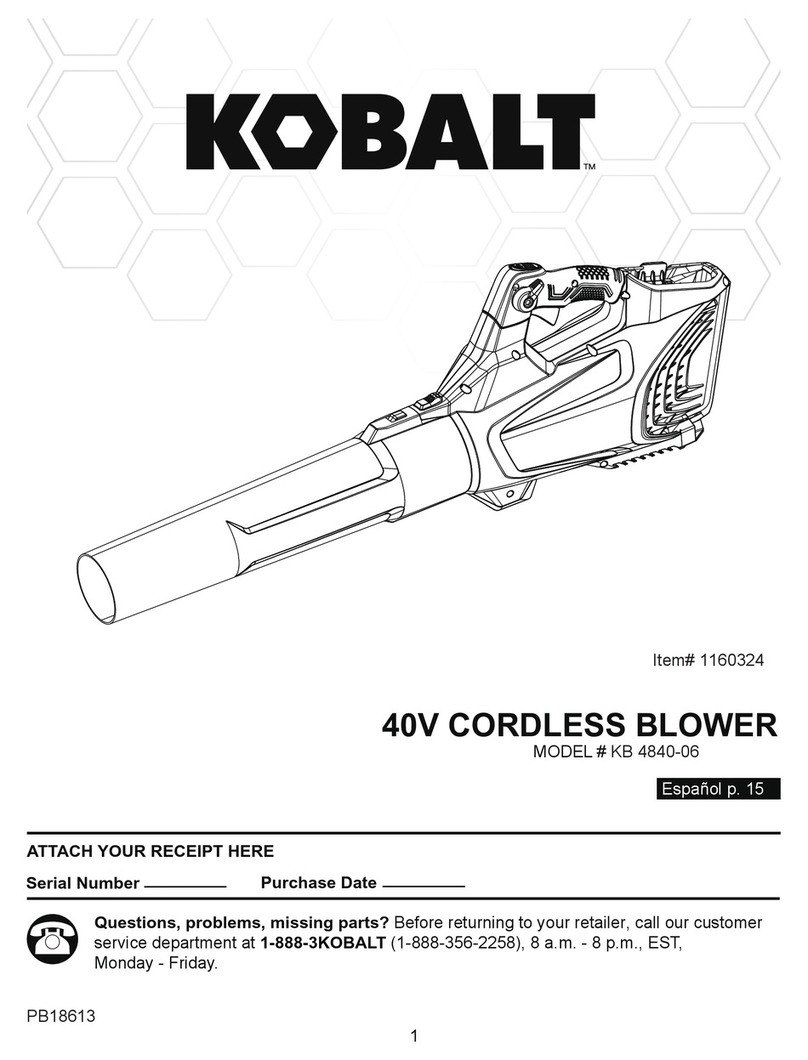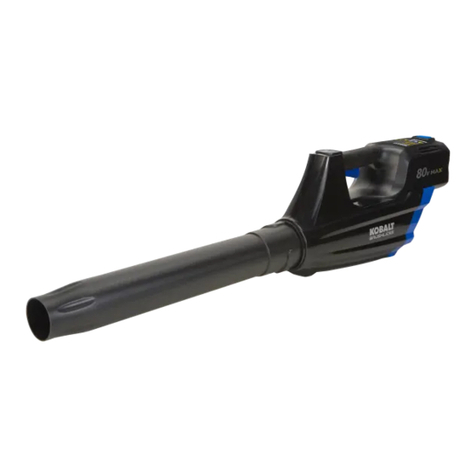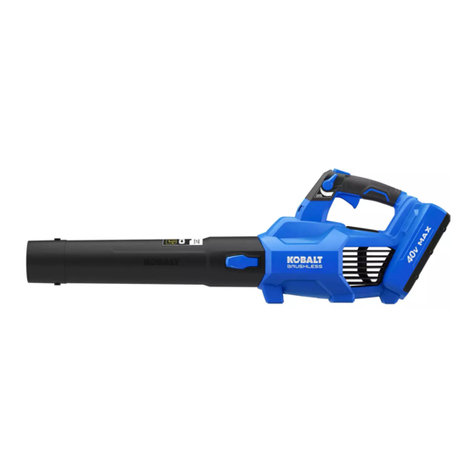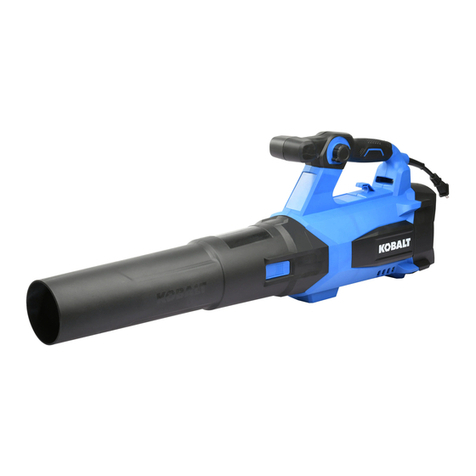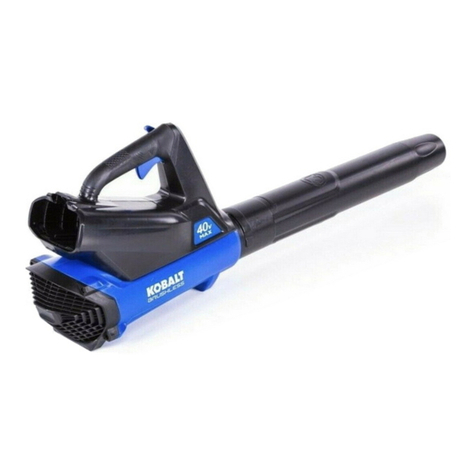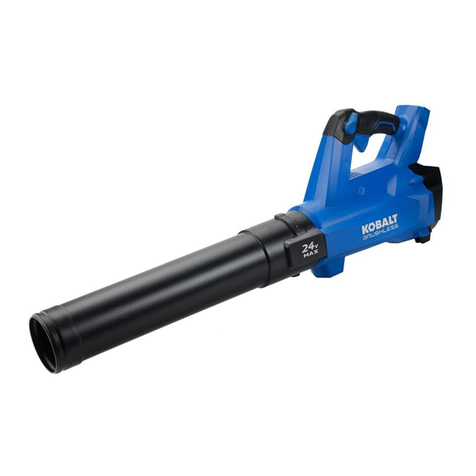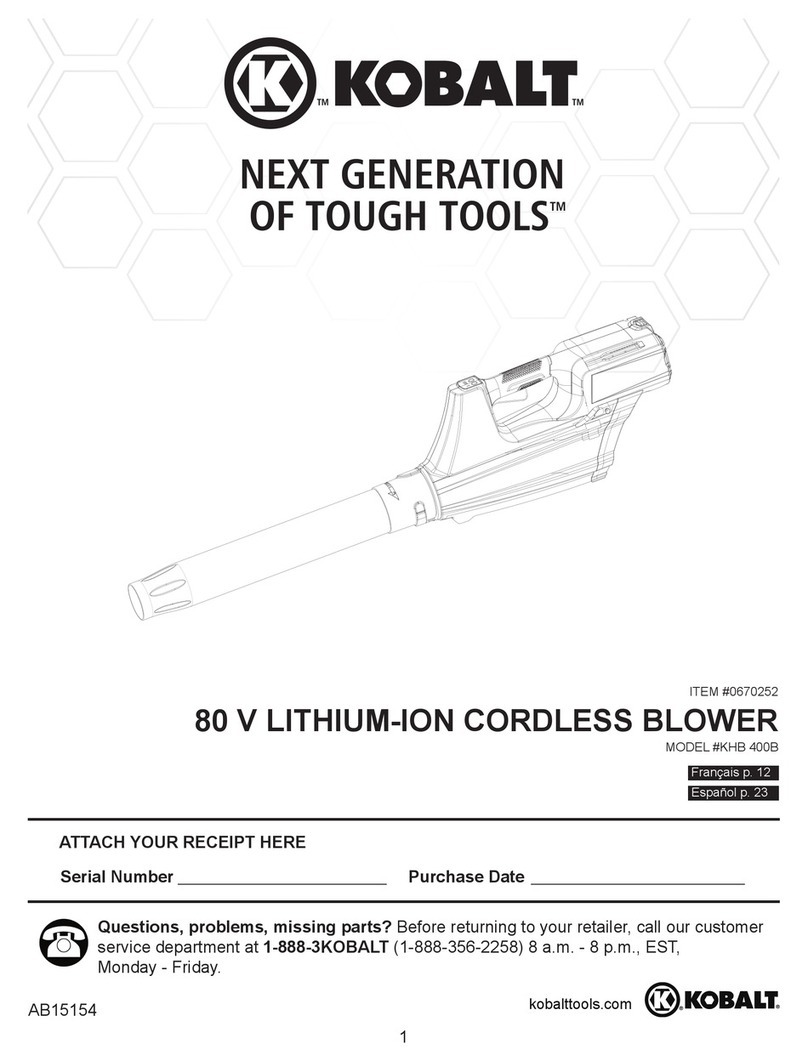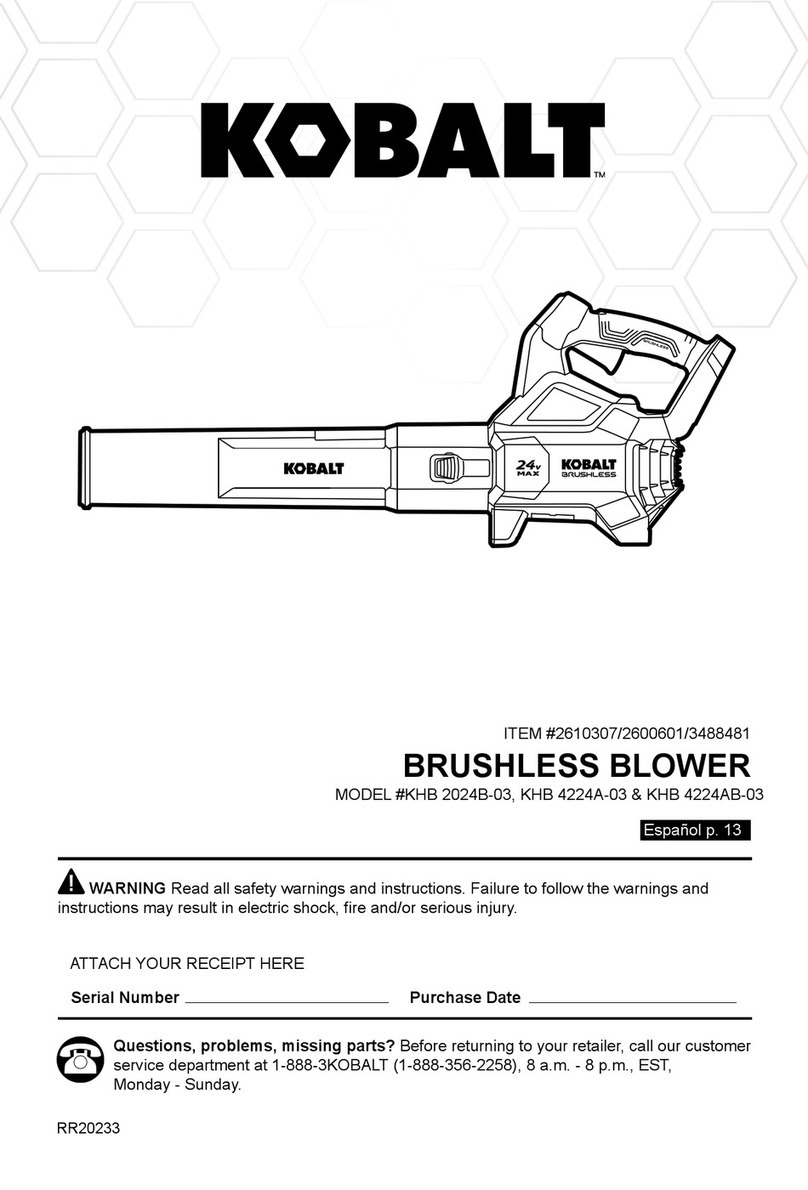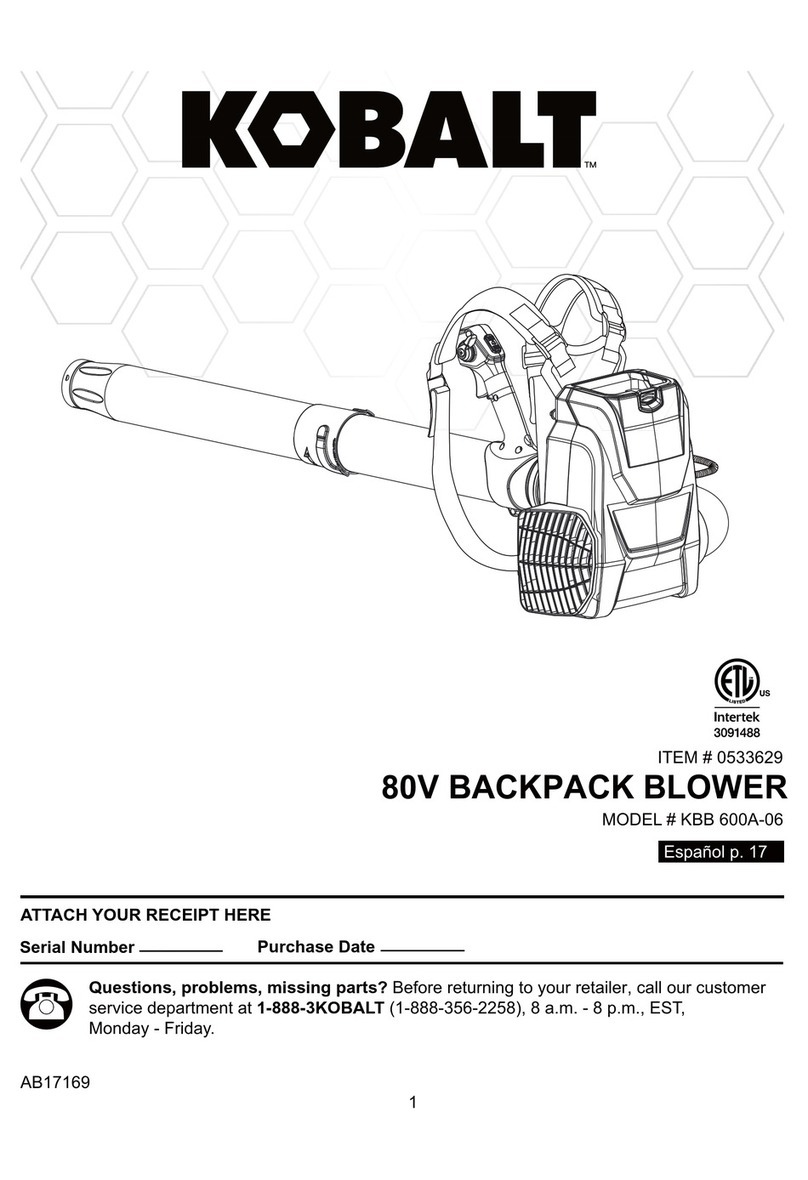
6
SAFETY INFORMATION
• Do not leave blower unattended when the battery is inserted. Remove the battery when
the blower is not in use and before servicing.
• Avoid accidental starting. Be sure that the switch is in the locked or off position
before inserting the battery pack. Carrying blowers with your nger on the switch or
inserting the battery pack into a blower with the switch on invites accidents.
• Do not operate blowers in explosive atmospheres, such as in the presence of
ammable liquids, gases, or dust. Blowers create sparks which may ignite the dust or
fumes.
• Stay alert, watch what you are doing and use common sense when operating a power
blower. Do not use the blower while tired, upset, or under the inuence of drugs,
alcohol, or medication. A moment of inattention while operating blowers may result in
serious personal injury.
• Do not use on a ladder, rooftop, tree, or other unstable support. Stable footing on a
solid surface enables better control of the blower in unexpected situations.
• Keep rm footing and balance. Do not overreach. Overreaching can result in loss of
balance.
• Always take care of your feet, children, or pets around you when removing the battery
pack from blower. NEVER remove the battery pack when in a high position. Serious
injury could result if the battery pack falls.
• Do not use the blower if switch does not turn it on or off. A blower that cannot be
controlled with the switch is dangerous and must be repaired.
• Removing the battery pack from the blower before making any adjustments, changing
accessories, or storing the blower. Such preventive safety measures reduce the risk of
starting the blower accidentally.
• Check for misalignment or binding of moving parts, breakage of parts, and any
other condition that may affect the blower’s operation. If damaged, have the blower
serviced before using. Many accidents are caused by poorly maintained blowers.
• Keep the blower and its handle dry, clean and free from oil and grease. Always use
a clean cloth when cleaning. Never use brake uids, gasoline, petroleum-based
products, or any strong solvents to clean your blower. Following this rule will reduce the
risk of loss of control and deterioration of the enclosure plastic.
• Use safety equipment. Always wear eye protection with side shields marked to
comply with ANSI Z87.1 along with hearing protection when operating this equipment.
Everyday glasses have only impact resistant lenses. They are NOT safety glasses.
Following this rule will reduce the risk of eye injury.
• Protect your lungs. Wear a face or dust mask if the operation is dusty. Following this
rule will reduce the risk of serious personal injury.
• Protect your hearing. Wear hearing protection during extended periods of operation.
Following this rule will reduce the risk of serious personal injury.
• Wear heavy long pants, long sleeves, boots, and gloves. Avoid loose garments or
jewelry that could get caught in moving parts of the machine or its motor.
• Do not operate the equipment while barefoot or when wearing sandals or similar
lightweight footwear. Wear protective footwear that will protect your feet and improve your
footing on slippery surfaces.
• Batteries can explode in the presence of a source of ignition, such as a pilot light.
To reduce the risk of serious personal injury, never use any cordless product in the
presence of open ame. An exploded battery can propel debris and chemicals. If
exposed, ush with water immediately.
• Check the work area before each use. Remove all objects such as rocks, broken glass,
nails, wire, or string which can be thrown by or become entangled in the machine.

